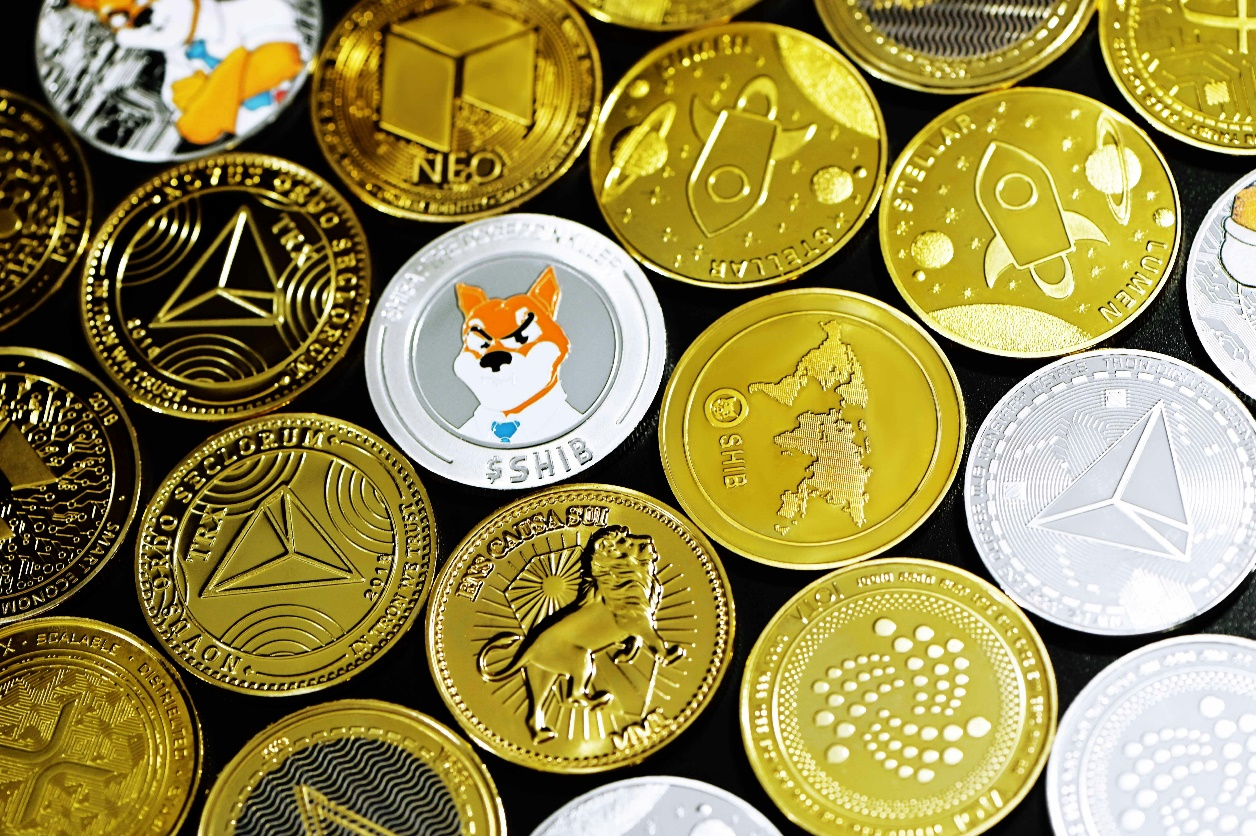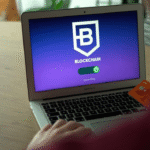Digital assets have revolutionized the financial landscape, introducing new ways of transacting, investing, and securing value. From the advent of cryptocurrencies to the innovative practice of real-world asset tokenization, understanding these concepts is crucial for anyone venturing into the digital asset space. This comprehensive guide will walk you through the fundamentals of digital assets, including cryptocurrencies, blockchain technology, stablecoins, and the exciting world of real-world asset tokenization.
We will also explore how hedge fund companies and specialized digital asset consulting firms are leveraging these technologies to enhance investment strategies and performance.

Understanding Cryptocurrencies
What Are Cryptocurrencies?
Cryptocurrencies are digital or virtual currencies that use cryptography for security. Unlike traditional currencies issued by governments (fiat currencies), cryptocurrencies operate on a technology called blockchain, which is decentralized and distributed across a network of computers. Investing in cryptocurrencies has become a popular venture, attracting individual investors, hedge funds, and cryptocurrency investment consultants.
How Do Cryptocurrencies Work?
Cryptocurrencies function through blockchain technology, a decentralized ledger that records all transactions across a network of computers. Each block in the chain contains a list of transactions, and once a block is completed, it is added to the chain in a linear, chronological order. This process ensures that the transaction history is transparent and immutable, providing security in digital asset management.
Key Features of Cryptocurrencies
Decentralization: Unlike traditional financial systems that rely on central authorities like banks and governments, cryptocurrencies operate on decentralized networks facilitated by blockchain technology. This decentralization means no single entity has control over the entire network, reducing the risk of systemic failures and potential abuses of power. Hedge fund company risk management teams value this decentralization for its potential to reduce systemic risk and to provide more robust and resilient financial systems.
Security: Cryptocurrencies utilize advanced cryptographic techniques to secure transactions, ensuring that they are both safe and reliable. This includes the use of public and private keys to manage and authorize transactions, as well as various encryption algorithms to safeguard the integrity of the data. For digital asset management, security is paramount, protecting assets from hacking, fraud, and other malicious activities. This high level of security is crucial for both individual and institutional investors, instilling confidence in the use of cryptocurrencies as a secure investment vehicle.
Transparency: Every transaction made with cryptocurrencies is recorded on a public ledger known as the blockchain. This ledger is accessible to anyone and cannot be easily altered, providing a transparent record of all activities. This transparency is vital in reducing the risk of fraud and increasing trust in the financial system. Transparent investment solutions are a key consideration for digital asset investment consultants, as they allow for better oversight and accountability, ensuring that investors can trust the validity and history of the transactions they are involved in.

Immutability: Once a transaction is recorded on the blockchain, it becomes immutable, meaning it cannot be altered or deleted. This characteristic ensures the integrity of the transaction history, providing an unchangeable record that is resistant to tampering and revision. This immutability is particularly important for auditing purposes, legal evidence, and maintaining the trustworthiness of the blockchain as a source of truth.
Additional Key Features
Accessibility: Cryptocurrencies can be accessed by anyone with an internet connection, removing many barriers to entry found in traditional banking systems. This universal accessibility can promote greater financial inclusion, particularly in regions underserved by conventional financial institutions.
Lower Transaction Costs: Transactions made with cryptocurrencies can often be processed at lower costs compared to traditional banking systems. This cost efficiency is particularly beneficial for cross-border transactions, which can be expensive and slow with traditional systems.
Programmability: Many cryptocurrencies, particularly those like Ethereum, allow for programmable transactions through smart contracts. These are self-executing contracts with the terms directly written into code, enabling automated and trustless execution of agreements without the need for intermediaries.
Scalability: While scalability remains a challenge, ongoing developments and upgrades in blockchain technology aim to enhance the capacity and speed of cryptocurrency networks to handle a growing number of transactions efficiently.
Privacy: Cryptocurrencies offer varying degrees of privacy. Some, like Bitcoin, provide pseudonymity, while others, like Monero and Zcash, focus on enhanced privacy features that make transactions untraceable and confidential. This can be important for users who prioritize their financial privacy.
Global Reach: Cryptocurrencies are not bound by national borders, allowing for seamless and quick global transactions. This global reach enables businesses and individuals to engage in international trade and financial activities without the need for traditional currency exchanges.
By integrating these detailed features, cryptocurrencies present a transformative approach to finance, offering unique advantages over traditional systems. These attributes are increasingly recognized by various stakeholders in the financial industry, driving further adoption and innovation in the digital asset space.
Popular Cryptocurrencies
Bitcoin (BTC): The first and most well-known cryptocurrency, created by an anonymous person or group known as Satoshi Nakamoto in 2009. Bitcoin is often referred to as digital gold due to its limited supply and store of value properties. Bitcoin investment consultants play a crucial role in guiding investors through the complexities of this asset.
Ethereum (ETH): Launched in 2015 by Vitalik Buterin, Ethereum introduced the concept of smart contracts, which are self-executing contracts with the terms directly written into code. Leading digital asset consulting experts often recommend Ethereum for its versatile applications.
Ripple (XRP): Known for its real-time gross settlement system, Ripple facilitates cross-border payments and aims to improve the efficiency of financial transactions.

Altcoins vs. Major Cryptocurrencies
Altcoins refer to all cryptocurrencies other than Bitcoin. While Bitcoin remains the dominant player, many altcoins like Ethereum, Ripple, and Litecoin offer unique features and use cases. Cryptocurrency investment consultants often help investors navigate the differences and potential of altcoins vs. major cryptocurrencies.
Real-World Examples of Cryptocurrency Use
Bitcoin as Digital Gold: Many investors view Bitcoin as a hedge against inflation and a store of value, similar to gold. Specialized hedge fund investment firms often incorporate Bitcoin into their portfolios for long-term growth.
Ethereum and Decentralized Applications (DApps): Ethereum’s smart contract functionality has led to the development of various decentralized applications, including decentralized finance (DeFi) platforms, non-fungible tokens (NFTs), and more.
Ripple and Cross-Border Payments: Financial institutions like Santander and American Express use Ripple’s technology to facilitate faster and cheaper cross-border transactions.
Blockchain Technology: The Backbone of Digital Assets
What Is Blockchain Technology?
Blockchain is a decentralized digital ledger that records transactions across multiple computers in a way that ensures security, transparency, and immutability. Each block in the chain contains a list of transactions, and these blocks are linked together in chronological order, forming a chain. Blockchain asset investment consultants help businesses and investors leverage this technology for various applications.
How Does Blockchain Work?
Transaction Initiation: A blockchain transaction begins when a user initiates a transfer of digital assets, such as cryptocurrency, or executes a smart contract. This transaction includes details such as the sender’s and receiver’s addresses, the amount to be transferred, and a timestamp. This information is then broadcast to a network of computers, known as nodes, which participate in maintaining the blockchain.
Validation: The network of nodes validates the transaction to ensure its authenticity and correctness. This process involves several steps:

Verification: Nodes check the transaction for validity, ensuring that the sender has sufficient funds or assets to complete the transaction.
Consensus Mechanisms: To agree on the validity of transactions, nodes use consensus mechanisms. Two common types are:
Proof of Work (PoW): Nodes (miners) solve complex cryptographic puzzles to validate transactions and add them to the blockchain. This process requires significant computational power and energy.
Proof of Stake (PoS): Validators are chosen based on the number of coins they hold and are willing to “stake” as collateral. This method is more energy-efficient than PoW.
Block Creation: Once validated, the transaction is grouped with other validated transactions to form a new block. This block includes:
Block Header: Contains metadata such as a timestamp, the hash of the previous block, and a nonce (in PoW systems).
Transaction Data: The actual transactions that are being recorded in the block.
Merkle Root: A single hash representing all transactions in the block, allowing for efficient and secure verification of the transactions.
Block Addition: The new block is added to the existing blockchain in a linear and chronological order. This process involves:
Linking Blocks: Each new block contains a reference (hash) to the previous block, creating a chain of blocks (hence the name “blockchain”).
Broadcasting the Block: Once a block is successfully created and validated, it is broadcast to all other nodes in the network. These nodes update their copies of the blockchain to include the new block.
Immutability: Once added, the information in the block cannot be altered or deleted, ensuring the integrity of the blockchain. This immutability is achieved through:
Cryptographic Hashing: Each block contains a hash of the previous block, making it computationally infeasible to alter any information without redoing the work for all subsequent blocks.
Consensus Protocols: Any change to a block would require consensus from the majority of the network, which is practically impossible to achieve for a malicious actor.
Types of Blockchain
Public Blockchain: Open to anyone and decentralized, examples include Bitcoin and Ethereum. Blockchain and digital asset consulting firms often focus on these for broad applications.
Private Blockchain: Restricted access and controlled by a single organization, often used in enterprise settings. Consulting on digital asset management often involves private blockchains for secure business applications.
Consortium Blockchain: A hybrid of public and private, where a group of organizations governs the blockchain.

Applications of Blockchain Technology
Supply Chain Management: Blockchain ensures transparency and traceability in supply chains, helping to prevent fraud and verify the authenticity of products.
Healthcare: Blockchain can securely store patient records and streamline sharing of information between healthcare providers.
Voting Systems: Blockchain-based voting systems can enhance transparency and reduce the risk of fraud in elections.
Real-World Examples of Blockchain Applications
Walmart and IBM’s Food Trust: Walmart uses IBM’s blockchain-based Food Trust to track the origin of its products, ensuring food safety and traceability.
Maersk and TradeLens: Maersk, in partnership with IBM, developed TradeLens, a blockchain platform that digitizes the global shipping industry, reducing paperwork and increasing efficiency.
Estonia’s e-Residency Program: Estonia leverages blockchain to offer e-residency, enabling entrepreneurs to start and manage businesses online with secure digital identities.
Stablecoins: Bridging the Gap Between Crypto and Fiat
What Are Stablecoins?
Stablecoins are a type of cryptocurrency designed to maintain a stable value by being pegged to a reserve asset, such as a fiat currency (e.g., USD), a commodity (e.g., gold), or a basket of assets. The primary goal of stablecoins is to provide the benefits of cryptocurrencies (such as fast and low-cost transactions) without the volatility typically associated with them. Stablecoin investment consultants help investors understand the potential and risks of these assets.
Types of Stablecoins
Fiat-Collateralized Stablecoins: Backed by fiat currencies held in reserve. Examples include Tether (USDT) and USD Coin (USDC).
Crypto-Collateralized Stablecoins: Backed by other cryptocurrencies, often over-collateralized to account for volatility. Examples include Dai (DAI) from the MakerDAO platform.
Algorithmic Stablecoins: Use algorithms and smart contracts to manage the supply and demand of the stablecoin, maintaining its peg without collateral. Examples include Terra (UST).
Benefits of Stablecoins
Stability: By pegging their value to stable assets, stablecoins avoid the extreme volatility seen in other cryptocurrencies.
Efficiency: Stablecoins enable faster and cheaper transactions compared to traditional banking systems.
Accessibility: Stablecoins can facilitate financial inclusion by providing easy access to digital transactions and savings for people without traditional banking services.
Integration: Stablecoins can seamlessly integrate with decentralized finance (DeFi) applications, offering stability in various financial services like lending, borrowing, and trading.
Real-World Examples of Stablecoin Use
Cross-Border Payments: Stablecoins like USDC are used for remittances, allowing individuals to send money across borders quickly and with lower fees compared to traditional methods.
Decentralized Finance (DeFi): Platforms like Aave and Compound use stablecoins for lending and borrowing, providing a stable medium of exchange and store of value within the DeFi ecosystem.
Merchant Payments: Businesses like online retailers and service providers accept stablecoins as payment, benefiting from lower transaction fees and faster settlement times.
Real-World Asset Tokenization: Bridging Digital and Physical Worlds
What Is Real-World Asset Tokenization?
Real-world asset tokenization is the process of creating a digital representation (token) of a physical asset on a blockchain. This practice allows for the fractional ownership, transfer, and trading of assets that traditionally require significant capital and involve cumbersome processes. Through tokenization, assets like real estate, art, commodities, or intellectual property can be divided into smaller, more affordable units, making them accessible to a broader range of investors. Investment companies often look at tokenization for short-term gains as it provides increased liquidity and accessibility, enabling more efficient and flexible investment strategies.
How Does Asset Tokenization Work?
Asset Selection
Identify the Asset: The first step involves selecting the real-world asset to be tokenized. This can include tangible assets like real estate, fine art, precious metals, or commodities, as well as intangible assets such as intellectual property, patents, or even future revenue streams.
How to Tokenize Real-World Assets: A Step-by-Step Guide

Valuation: Accurately valuing the asset is crucial to determine how many tokens will be issued and at what price.
Token Creation
Develop Digital Tokens: Digital tokens representing ownership or rights to the asset are created using blockchain technology. Common blockchain platforms used for token creation include Ethereum, Binance Smart Chain, and Polkadot.
Smart Contracts: Smart contracts are coded to define the rules and conditions for token ownership, transfers, and rights. These contracts automate processes and ensure compliance with predefined terms.
Legal and Regulatory Compliance
Compliance Framework: Ensure that the tokenization process adheres to relevant legal and regulatory frameworks. This involves understanding securities laws, anti-money laundering (AML) regulations, and know-your-customer (KYC) requirements.
Legal Documentation: Drafting and providing clear legal documentation outlining the rights and obligations of token holders, including the terms of ownership, transferability, and potential dividends or returns.
Platform Integration
Digital Platform Listing: Once created, tokens are listed on digital platforms or token exchanges where they can be bought, sold, or traded. These platforms function similarly to stock exchanges, providing a marketplace for tokenized assets.
Secondary Markets: Tokens can also be traded on secondary markets, enhancing liquidity and allowing investors to buy and sell tokens after the initial offering.
Additional Steps and Considerations
Custody and Asset Management
Custodianship: Establishing a custodianship for the physical asset to ensure it is securely held and managed. This can involve traditional custodians or blockchain-based custody solutions.
Asset Management: Continuous management of the asset, including maintenance, valuation updates, and ensuring its ongoing compliance and performance.
Fractional Ownership
Divisibility: Tokens represent fractional ownership, allowing investors to purchase a portion of the asset rather than the whole. This lowers the barrier to entry and democratizes access to high-value assets.
Liquidity Pools: Creating liquidity pools where tokens can be easily exchanged, providing investors with the ability to liquidate their holdings as needed.
Investor Relations
Transparency: Providing regular updates and transparent reporting to token holders about the asset’s performance, market conditions, and any relevant developments.
Governance: Implementing governance mechanisms that allow token holders to participate in decision-making processes related to the asset.
Security and Technology
Blockchain Security: Ensuring the blockchain platform and smart contracts are secure, preventing hacking, fraud, and unauthorized access.
Technology Infrastructure: Developing a robust technological infrastructure to support the tokenization process, including secure wallets for storing tokens and user-friendly interfaces for trading.
Market Considerations
Market Demand: Assessing market demand for the tokenized asset, understanding the target investor base, and tailoring the offering to meet investor needs.
Marketing and Distribution: Creating effective marketing strategies to attract investors and ensure successful distribution of tokens.
Benefits of Real-World Asset Tokenization
Liquidity: Tokenization provides liquidity to traditionally illiquid assets, enabling fractional ownership and easier transferability. Blockchain-based investment opportunities often focus on this benefit.
Accessibility: Lowering the entry barriers allows more investors to participate in markets that were previously accessible only to high-net-worth individuals or institutional investors. Digital asset advisory services play a crucial role in this democratization.
Transparency: Blockchain technology ensures transparent and immutable records of ownership and transaction history.
Efficiency: Streamlines processes related to asset management, transfer, and verification, reducing costs and time. Comprehensive digital asset consulting services help in achieving this efficiency.
Real-World Examples of Asset Tokenization
Real Estate: Platforms like RealT and SolidBlock tokenize real estate properties, allowing investors to purchase fractional ownership in properties, earn rental income, and trade their tokens on secondary markets. These platforms also work with digital asset management consultants to optimize their processes.
Art: Maecenas is a blockchain-based platform that tokenizes high-value artworks, enabling art enthusiasts to invest in fractional shares of masterpieces by artists like Picasso and Monet.
Commodities: DigixGlobal tokenizes gold, allowing investors to own and trade gold-backed tokens (DGX) that represent ownership of physical gold stored in secure vaults.
Intellectual Property: IPwe leverages blockchain technology to tokenize intellectual property assets, making it easier to manage, trade, and monetize patents.
Challenges and Considerations
Regulatory Uncertainty: The regulatory environment for asset tokenization is still evolving, with different jurisdictions having varying rules and guidelines. Leading digital asset consulting experts help navigate these complexities.
Legal Ownership and Rights: Ensuring that token holders have clear legal ownership and rights to the underlying assets is crucial for the success and adoption of tokenized assets.
Technological Integration: Developing and integrating robust blockchain platforms that can handle the complexities of real-world assets requires significant investment and expertise. Blockchain asset investment consultants provide the necessary guidance.
Market Adoption: Gaining trust and adoption from traditional investors and market participants is essential for the widespread acceptance of asset tokenization.
Why Tokenization is the Future of Real-World Assets
Embracing the Digital Asset Revolution
The digital asset landscape, encompassing cryptocurrencies, blockchain technology, stablecoin investment consultant services, and real-world asset tokenization, is transforming the way we think about finance, investment, and ownership. Understanding these fundamentals is crucial for anyone looking to navigate and leverage the opportunities in this rapidly evolving space. Strategic digital asset management consulting services at Kenson Investments are invaluable in guiding investors and businesses through this transformation.
The emerging trend of real-world asset tokenization is particularly exciting, as it democratizes access to traditionally illiquid and high-value assets. By tokenizing assets like real estate, art, commodities, and intellectual property, we can unlock new levels of liquidity, accessibility, and efficiency in the global markets. Digital asset management services such as Kenson Investments are crucial for optimizing these benefits.
As we continue to explore and embrace these innovations, it is essential to stay informed about the evolving regulatory landscape, technological advancements, and market trends. By doing so, we can unlock the full potential of digital asset investments and drive a more inclusive, transparent, and efficient financial future. Comprehensive digital asset consulting services are pivotal in navigating these changes.
Whether you are a newcomer looking to understand the basics or an experienced investor seeking to diversify your portfolio, the world of digital assets offers a wealth of opportunities and possibilities. Embrace the digital asset revolution and be part of the future of finance with the guidance of global digital asset consulting firms. Work with us at Kenson Investments today to experience enhancing ROI with digital asset consulting.
Work with us at Kenson Investments today.














